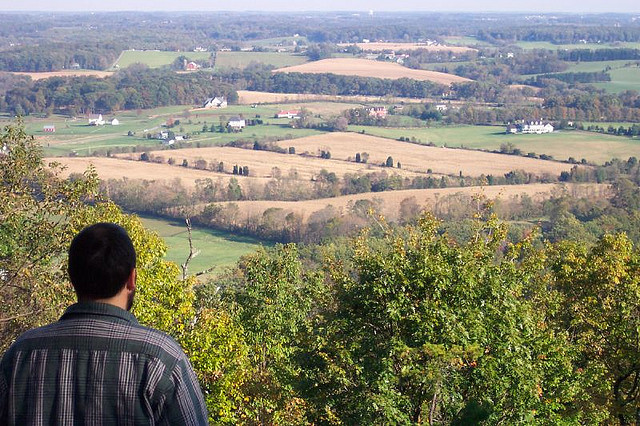After Gov. Larry Hogan signed a quickly redrawn congressional district map into law last week, agriculture-related electorates living in the Western Maryland and Eastern Shore regions were pleased.
Primarily located in Western Maryland, the new 6th Congressional District gained all of Frederick County’s rich agriculture. On the opposite side of the Free State, the new 1st Congressional District has included all of Harford County and parts of eastern Baltimore County, mainly in the agriculture region. I have exclaimed that this new map could restore farmers’ voting power strength like what the 2002 congressional map showed.
According to the 2017 Ranking of Congressional Districts by Farm Producers, Maryland’s 1st District ranked 137th of the current 435 congressional districts, with 5,298 farms. In Maryland, it was followed by the 6th District (ranked 212th) with 2,462 farms; the 5th District (233rd) with 1,878; the 8th District (240th) with 1,683; the 7th District (288th) with 653; the 3rd District (342th) with 183; the 2nd District (351st) with 143, and the 4th District (352nd) with 129 farms.
For fun facts, the No. 1 Congressional District was Nebraska’s 3rd District with 33,294 farms, while the bottom was New York’s 7th District (ranked at 431st) with only three farms. The 5th, 12th, Rep. Alexandria Ocasio-Cortez’s 14th, and 15th Districts in New York have no farms, so they were not ranked.
Under the new 2022 Congressional District map, the 1st District will remain the No. 1 District in the total number of farms, losing the Carroll County area around the Manchester Valley school district but keeping the Harford County and eastern Baltimore County. The Legislative Redistricting Advisory Commission tried to exclude Harford County (628 farms) from the 1st District.
The number of farms for the new 6th Congressional District is roaring up by adding 1,373 in Frederick County. Suppose if the 6th District included all of Carroll County for the 2022 map, it could add 1,174 farms, but it would not outnumber the new First District’s total farms.
Down to Potomac River, Rep. Jamie Raskin, D-8th, might donate a few overalls to his favorite charity since his new 8th District lost 1,174 farms in Carroll County, which are redistricted mainly to the new 2nd District. Until the 2030 Election, Raskin, if elected, might keep one overall for visiting the farms around Sherwood High School and Springbrook H.S. in Montgomery County.
The surprising redraw might lead Rep. Dutch Ruppersberger, D-2nd, to purchase some overalls for visiting Carroll County farmers. Also, the Baltimore County resident needs to get some lectures from a traditional farmer’s daughter converted to a farmer-conservationist, Heather Mizeur; such as to tell the difference between the Ayrshire cow breed and the Holstein cow breed; the difference between the Berkshire pig breed and the Yorkshire pig breed, and the difference between barley and wheat?
For the next seven months, the residents in the 1st, 2nd, and 6th Districts will see and read more agriculture-related campaign issues, which were rare in the past decade.
Naturally, most of you might not know what I meant, but my point would have been hailed by the “Communities of Interest” advocates across the USA.
On Oct. 27, 2011, I filed suit over the 2011 congressional redistricting map in the United States Maryland District Court, arguing that it unnecessarily diluted the “voting power of agriculture-related electorates” (a community of interest) in the 6th Congressional District. (Gorrell v. O’Malley).
In a Barry Law Review article titled, “A Shield Becomes a Sword: Defining and Deploying a Constitutional Theory for Communities of Interest in Political Redistricting” (June 10, 2020), Professor Glenn D. Magpantay of Brooklyn Law School cited the Gorrell case and wrote, “This language suggests that communities seeking to preserve the unity of representation should concentrate their efforts on the political bodies drawing the maps in Maryland, as the courts may be unlikely to grant relief on those grounds. But while the result, in this case, seems to have engulfed the originally stated requirement to preserve communities of interest, in actuality, it follows other cases that a breakup of a community of interest is insufficient, alone and by itself, to undo an entire redistricting plan.”
Spirited by this community of interest in the agriculture-related in the new 2022 map, farming voters and voters-to-be will campaign harder in the 1st, 2nd, and 6th Districts.








Recent Comments